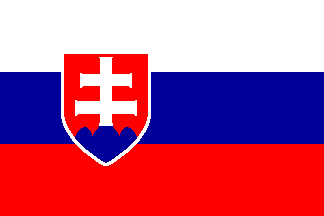|
As a first generation Czech/Slovak - Canadian , I wish I could say with confidence that my cultural background is strongly integrated in my daily life. A core component of a culture is the language, and I have to admit that I am far from being fluent in the Czech or Slovak language. Although my household carries on many traditions from my parents’ homeland, such as food, music, and literature, I can’t help feeling that there is so much more for me to know about this culture that is so distant but yet so precious to me.
You can imagine my curiosity when I heard about a summer language course offered in the Czech Republic. Univerzita Karlova v Praze (Charles University in Prague) offers a month long course in Dobruska, a charming town 140 km east of Prague. This school is such a jewel because it considers immersing students in the Czech culture to be just as important as learning the language. The school encourages bonding between the students, and given that this year the students came from 25 different countries and ranged from 18 - 70 years of age, it was quite an experience. Despite so many differences, the common goal of learning the Czech heritage brought us together.
Univerzita Karlova in Dobruška provides year-round accommodations that are available for students of the summer course. The residence rooms house 2 - 3 people per room.. Each floor of the school has a kitchen with a fridge and stove. Lunches and dinners were provided either at a good restaurant in the town square (Hotel Jelen) or at a Hostinec (Charbory) a few minutes away from the school. There I savored the tastiest knedlíky s ovocem (dumplings with fruit in the middle) and tašti…ky s tvarohem (pasta filled with cottage cheese, sprinkled with cinnamon and sugar).
A typical weekday consisted of four hours of morning lessons. Lessons were diverse, including grammar, reading, workbook activities, comprehension, writing assignments and class discussions. The last 45 minutes of each class were usually dedicated to informing us about the activities and trips that we could partake in that week. Lunch was at 1:00, and we had free time afterwards to swim, play volleyball or relax. During the late afternoon, there were films or presentations about different aspects of Czech culture. I particularly enjoyed a presentation on modern Czech folk music, in which we had a chance to listen to various artists and examine lyrics. At 6:00, we would make our way to the Hotel Jelen for dinner. Depending on the interest, the evenings could be spent singing and dancing, or among friends in a hospoda or diskoteka.
That was an example of a relatively uneventful day, compared to what they had planned for us on the weekends. Every weekend we took trips to neighboring villages to explore castles, historic sites, festivals, and mountains. An impressive castle is situated in the village of Opocno. It was originally a fortress that was converted into a neo-Romanesque chateau. The castle is filled with hunting trophies, African and American artifacts, and a captivating collection of Italian paintings. Walking through the fairytale parklands that wrap around the castle, with a light fog swarming the landscape, was one of the most picturesque moments of our trip to Opocno.
We visited the local glass cutting factory, where we saw first-hand how beautiful world-famous Czech crystal is cut, and also a visit to the local textile factory. Another memorable trip was to the Adrsbach- Teplice Rocks, an impressive expanse of amazing rock formations in the Broumov Hills, east of Krkonose. We hiked through the sandstone rocks that have been eroded by water to form the beautiful rock towers. A pleasant ride in a wooden boat gave our feet a rest while we admired the rocks that hovered above the green water of a small lagoon.
We were lucky enough to catch an opening night performance of a folk festival in C”ervený Kostelec. I was captivated by performances of professional folklore dancers from 12 different countries. The costumes, music and dances gave us a taste of different cultures from around the world.
Dobruška is located west of the beautiful East Bohemian Mts., the Orlické hory, an absolute haven for hikers and cyclist. Hiking up to the top of one of the small mountains, we were able to see the Polish border. There we rested and were treated to a reading of a tale taking place in these mountains. We rented mountain bikes in the village of Destne and went on an adventure of riding through winding roads with views of the Bela River. This is just a taste of some of the beautiful scenery and special events that I encountered in Dobruška. I returned home with my slovník clutched tightly in my hand, ready to show everyone how much I’ve progressed. My experience in Dobruška has brought me one step closer to the language and culture of my heritage.
Map of the area.
|

